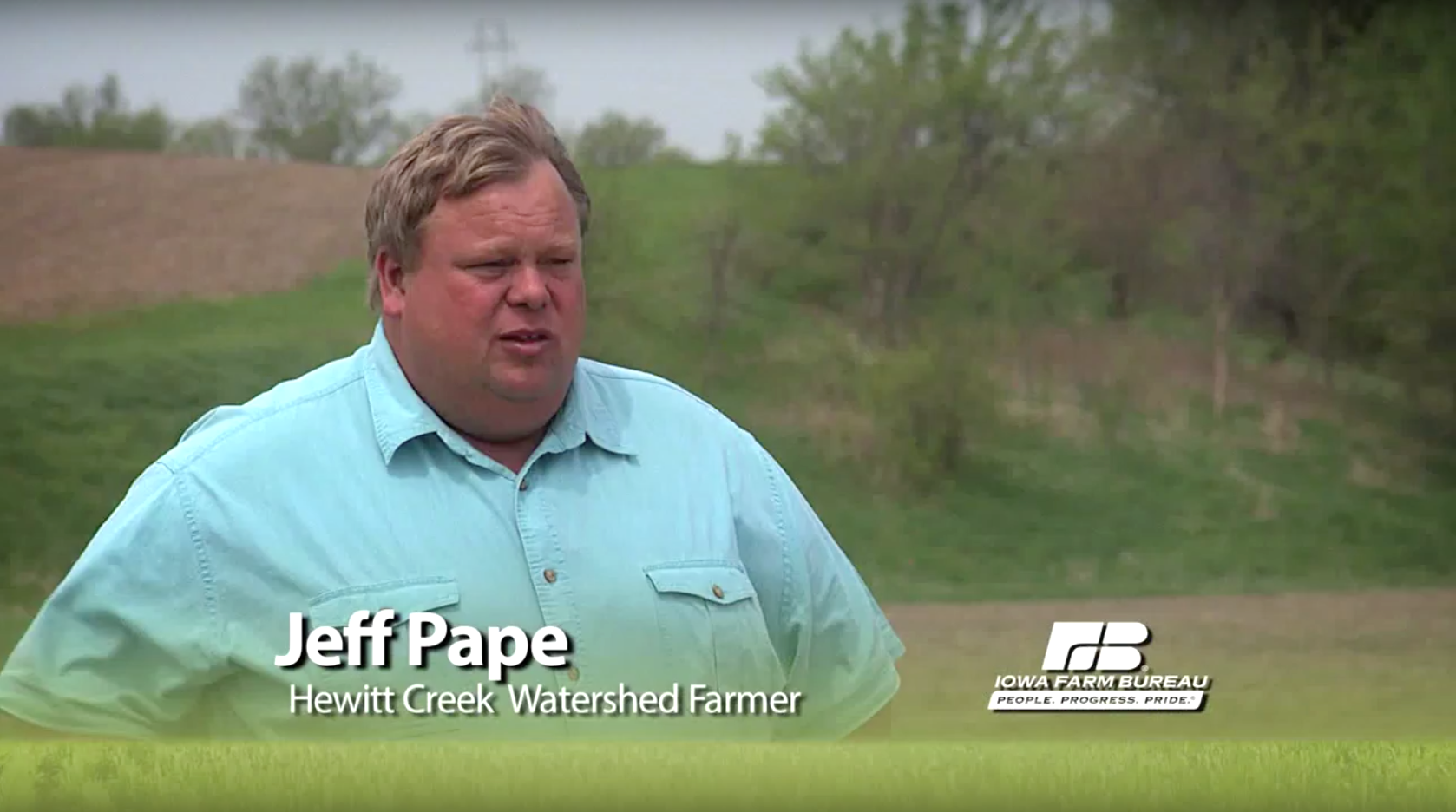
Band of Farmers
Ten years ago, farmers in northeast Iowa banded together to improve their watershed. Now it’s being called
a model for improving water quality across Iowa and the nation.
The 23,000-acre Hewitt Creek watershed drains into the Maquoketa River in northeast Iowa. In 2004, farmers and other watershed residents met and decided to do something about the condition of local streams, including one that landed on the state’s impaired waters list.
The farmers’ first step was to team up with Iowa State University faculty and extension and outreach specialists to develop a farmer-led plan linking management practices to desired water quality outcomes. Iowa State provided them with information on science-proven practices to make a difference in improving water quality, and how to track data and interpret performance measures.
But what really kick-started change in the watershed was seed money provided by the Iowa Farm Bureau Federation.
The Iowa Farm Bureau’s funds helped farmers implement conservation practices, monitor environmental and economic performance and demonstrate a farmerled approach to implementing watershed improvements. Farmers invested their
own funds and in-kind contributions to the project, too.
The Iowa Farm Bureau funds were leveraged to secure nearly $1 million from the Iowa Department of Agriculture and Land Stewardship’s Iowa Water Improvement Fund. The success shown also led to a $5 million USDA grant for
programs to improve three Mississippi Basin subwatersheds, including Hewitt Creek.
Over a decade, the farmers adopted dozens of practices such as cover crops, grassed waterways, terraces, buffer strips, soil and nitrate testing, no-till planting, denitrification bioreactors and enhanced storage and application of manure.
The farmers have hit several benchmarks they set for reduced concentrations of nitrates and phosphorus. Nitrate levels
have been below the EPA’s safe drinking water standard nearly every year. After significant rains, phosphorus has tested
below 1 part per million. One bioreactor site demonstrates that more than 30 percent of nitrates can be removed before
tile water enters the creek.
Other visible changes tell the story. More fish swim the waters—and more families go fishing. Eagles, too, enjoy the fishing.
Widespread participation has been key. Jeff Pape is an Iowa Farm Bureau member who leads the Hewitt Creek Watershed
Improvement Association. He and other farmers recruited their neighbors until participation rate in the watershed was 85 percent.
“Traditionally, leadership of water quality improvement projects can be a top-down thing, but at Hewitt Creek, the ownership of the project is at the farmer level,” says Chad Ingels (’91 horticulture, MS ’13 professional agriculture), Iowa State University Extension and Outreach watershed projects coordinator. “I’ve been impressed how the farmers have taken on leadership roles and their willingness to share their experiences with other farmers. They prove that although the goals may be
difficult, they’re not insurmountable.”



